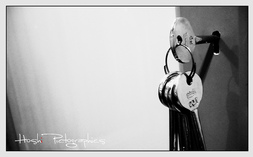- Home
- About Us
- TSPT Academy
- Online Courses
-
Resources
- Newsletter
- Business Minded Sports Physio Podcast
- Day in the Life of a Sports PT
- Residency Corner
-
Special Tests
>
-
Cervical Spine
>
- Alar Ligament Test
- Bakody's Sign
- Cervical Distraction Test
- Cervical Rotation Lateral Flexion Test
- Craniocervical Flexion Test (CCFT)
- Deep Neck Flexor Endurance Test
- Posterior-Anterior Segmental Mobility
- Segmental Mobility
- Sharp-Purser Test
- Spurling's Maneuver
- Transverse Ligament Test
- ULNT - Median
- ULNT - Radial
- ULNT - Ulnar
- Vertebral Artery Test
- Thoracic Spine >
-
Lumbar Spine/Sacroiliac Joint
>
- Active Sit-Up Test
- Alternate Gillet Test
- Crossed Straight Leg Raise Test
- Extensor Endurance Test
- FABER Test
- Fortin's Sign
- Gaenslen Test
- Gillet Test
- Gower's Sign
- Lumbar Quadrant Test
- POSH Test
- Posteroanterior Mobility
- Prone Knee Bend Test
- Prone Instability Test
- Resisted Abduction Test
- Sacral Clearing Test
- Seated Forward Flexion Test
- SIJ Compression/Distraction Test
- Slump Test
- Sphinx Test
- Spine Rotators & Multifidus Test
- Squish Test
- Standing Forward Flexion Test
- Straight Leg Raise Test
- Supine to Long Sit Test
-
Shoulder
>
- Active Compression Test
- Anterior Apprehension
- Biceps Load Test II
- Drop Arm Sign
- External Rotation Lag Sign
- Hawkins-Kennedy Impingement Sign
- Horizontal Adduction Test
- Internal Rotation Lag Sign
- Jobe Test
- Ludington's Test
- Neer Test
- Painful Arc Sign
- Pronated Load Test
- Resisted Supination External Rotation Test
- Speed's Test
- Posterior Apprehension
- Sulcus Sign
- Thoracic Outlet Tests >
- Yergason's Test
- Elbow >
- Wrist/Hand >
- Hip >
- Knee >
- Foot/Ankle >
-
Cervical Spine
>
- I want Financial Freedom
- I want Professional Growth
- I want Clinical Mastery
 This post come to us from in touch physical therapy blog. The author highlights 3 important components of every successful treatment session. 1) Decrease the patients pain or symptoms rating. He says a clinically meaningful change in pain is 2 points (for example changing pain from a 7/10 to a 5/10). It is also important to consider the pain during movement, and not while the patient is at rest. 2) Patient understands how to manage their symptoms One of our teachers consistently told us in class, "Your manual skills and treatment sessions are only as good as your home exercise program." She is correct. It is great if we can reduce the patient's pain, but if the patient cannot sustain that reduction in symptoms, what good have we really done? Providing good education and a strong home exercise is crucial to the patient's success. 3) Know that the patient's time and money was well spent A happy patient will hopefully be a compliant patient. It is important to remember that the patient is choosing to come see you. Many of them have high co-pays as well. As therapists we need to respect their time and money. Go above and beyond for them, and I am sure you will see positive results.
3 Comments
Eric Lehman
12/9/2012 11:40:48 pm
Great post! I love keeping up with the posts on this site and I think this is an extremely important aspect to consider.
Reply
Jim Heafner
12/10/2012 05:05:11 am
Hey Eric,
Reply
2/3/2013 05:32:59 pm
On average, Medicare covers about 48 percent of health care costs for enrollees, and the enrollee must then cover the rest of the costs.
Reply
Leave a Reply. |
Dr. Brian Schwabe's NEW Book in partner with PaleoHacks!
Learn residency-level content on our
Insider Access pages We value quality PT education & CEU's. Click the MedBridge logo below for TSPT savings!Archives
July 2019
Categories
All
|






 RSS Feed
RSS Feed